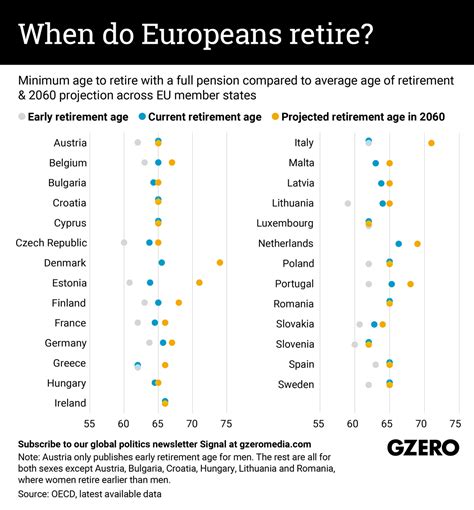
Southwest Airlines is implementing a new policy requiring passengers to verify the size of their carry-on luggage at the gate before boarding, a move described by travel experts as unprecedented among major U.S. airlines and one that has sparked mixed reactions from travelers.
The new protocol, which is being rolled out across Southwest’s network, mandates that gate agents visually inspect carry-on bags and tag them with a green “approved” tag if they meet the airline’s size restrictions: 10 x 16 x 24 inches. Passengers whose bags appear too large will be required to place them in a sizing bin to confirm compliance. Bags exceeding these dimensions must be checked, potentially incurring baggage fees.
“This is a significant shift in how Southwest has traditionally operated,” said Henry Harteveldt, a travel industry analyst with Atmosphere Research Group. “While other airlines have similar policies on the books, Southwest is the first to actively enforce carry-on size compliance at the gate level on a widespread basis.”
The airline defends the new policy as a measure to improve the boarding process and ensure that there is adequate space in overhead bins for all passengers. Southwest has long prided itself on its two-free-checked-bags policy, but increasingly crowded flights have led to congestion in the overhead bins and delays as passengers struggle to find space for their belongings.
“We strive to provide a consistent and reliable travel experience for our customers,” said a Southwest spokesperson in a statement. “This enhanced enforcement of our carry-on baggage policy will help ensure that all customers have a fair opportunity to store their bags in the overhead bins and that flights can depart on time.”
The policy has generated a range of responses from Southwest customers. Some applaud the move, saying it will reduce boarding chaos and improve the overall travel experience. Others express concerns about potential delays and the added scrutiny of their carry-on items. Still others question the fairness of the policy, arguing that it disproportionately affects passengers traveling with larger bags.
“I think it’s a good idea in theory, but I’m worried about how it will be implemented,” said Sarah Miller, a frequent Southwest flyer. “If it’s done fairly and consistently, it could make boarding less stressful. But if it’s just another way for the airline to nickel and dime passengers, it will backfire.”
The new policy comes as airlines grapple with increasing passenger loads and the challenge of managing limited overhead bin space. Many airlines have tightened their carry-on baggage rules in recent years, but Southwest’s move to actively enforce these rules at the gate represents a significant escalation.
The implications of the policy are far-reaching. It could lead to longer boarding times, increased baggage fees, and potentially more conflict between passengers and gate agents. However, it could also improve the overall travel experience by reducing boarding chaos and ensuring that passengers have a fair chance to store their bags in the overhead bins.
Historical Context of Southwest’s Baggage Policies
Southwest Airlines has built a significant portion of its brand identity around its customer-friendly baggage policies. Unlike many of its competitors, Southwest allows each passenger to check two bags free of charge. This policy has long been a major selling point for the airline, attracting travelers who are weary of the fees and restrictions imposed by other carriers.
The origin of this policy dates back to the airline’s early days. Southwest, initially a regional carrier serving Texas, sought to differentiate itself from larger, more established airlines by offering lower fares and more generous baggage allowances. The strategy proved successful, and Southwest quickly gained a loyal following among budget-conscious travelers.
Over the years, Southwest’s two-free-checked-bags policy has become a cornerstone of its brand. The airline has consistently promoted the policy in its advertising and marketing campaigns, emphasizing the value and convenience it offers to customers.
However, as the airline has grown and expanded its network, it has faced increasing pressure to adapt its baggage policies to the realities of modern air travel. With passenger loads on the rise, overhead bin space has become increasingly limited, leading to congestion and delays.
In response to these challenges, Southwest has gradually introduced measures to manage carry-on baggage more effectively. In addition to the new enforcement policy, the airline has also invested in larger overhead bins on some of its newer aircraft.
The airline has resisted calls to eliminate its two-free-checked-bags policy altogether, recognizing that it remains a key differentiator in a highly competitive market. However, the new enforcement policy suggests that Southwest is willing to take a more proactive approach to managing carry-on baggage in order to improve the overall travel experience for its customers.
Impact on Passengers and Potential Outcomes
The implementation of Southwest’s new carry-on baggage policy has the potential to significantly impact passengers in several ways, both positive and negative.
Reduced Boarding Chaos: One of the primary goals of the policy is to reduce the chaos and congestion that often accompany the boarding process. By ensuring that all carry-on bags comply with the airline’s size restrictions, Southwest hopes to minimize the number of oversized bags that need to be gate-checked, thereby speeding up the boarding process and reducing delays.
Increased Baggage Fees: Passengers whose carry-on bags exceed the size limits will be required to check their bags, which may incur baggage fees. This could be a significant financial burden for some travelers, particularly those who are accustomed to traveling with larger carry-on bags.
More Conflict with Gate Agents: The new policy has the potential to create more conflict between passengers and gate agents. Some passengers may resist having their bags checked, leading to arguments and delays. Gate agents will need to be trained to handle these situations with sensitivity and professionalism.
Improved Travel Experience: If the policy is implemented effectively, it could improve the overall travel experience for passengers. By reducing boarding chaos and ensuring that there is adequate space in the overhead bins, Southwest could make flying more comfortable and less stressful for everyone.
Shift in Passenger Behavior: The new policy may also lead to a shift in passenger behavior. Some travelers may choose to pack lighter in order to avoid having to check their bags. Others may opt to ship their belongings to their destination in advance.
Comparison with Other Airlines’ Policies
While Southwest’s new policy is unique in its active enforcement at the gate, other airlines have similar carry-on baggage policies in place. However, the level of enforcement varies widely.
American Airlines, Delta Air Lines, and United Airlines: These airlines all have size restrictions for carry-on bags, but they typically do not actively enforce these restrictions at the gate unless a bag appears to be significantly oversized. These airlines generally rely on passengers to self-regulate and comply with the rules.
Spirit Airlines and Frontier Airlines: These low-cost carriers are much stricter about enforcing carry-on baggage policies. They often charge fees for any carry-on bag that does not fit under the seat.
International Airlines: Many international airlines have even stricter carry-on baggage policies than their U.S. counterparts. They often weigh carry-on bags in addition to measuring them.
Expert Opinions and Industry Analysis
Travel industry experts have offered a range of opinions on Southwest’s new policy. Some believe that it is a necessary step to address the growing problem of overcrowded overhead bins. Others are concerned that it will create more friction between passengers and the airline.
“This is a bold move by Southwest,” said Harteveldt. “It could pay off in the long run if it improves the boarding process and reduces delays. However, it’s also a risky move, as it could alienate some of the airline’s loyal customers.”
Other experts have noted that the policy could prompt other airlines to follow suit. “If Southwest is successful in enforcing its carry-on baggage policy, other airlines may be tempted to do the same,” said Robert Mann, an airline industry consultant. “This could lead to a more standardized approach to carry-on baggage across the industry.”
Potential Challenges and Implementation Hurdles
Southwest faces several potential challenges in implementing its new carry-on baggage policy.
Training Gate Agents: Gate agents will need to be properly trained to enforce the policy fairly and consistently. They will also need to be equipped to handle potentially difficult interactions with passengers.
Providing Adequate Sizing Bins: Southwest will need to ensure that there are enough sizing bins available at each gate to accommodate the increased number of passengers who will need to check their bags.
Communicating the Policy Effectively: Southwest will need to communicate the new policy clearly and effectively to passengers. This will involve updating the airline’s website, sending out email notifications, and posting signs at airports.
Managing Customer Expectations: Southwest will need to manage customer expectations carefully. The airline will need to be transparent about the reasons for the new policy and the potential impact on passengers.
Long-Term Implications for Southwest and the Airline Industry
The long-term implications of Southwest’s new carry-on baggage policy are difficult to predict. However, it could have a significant impact on both the airline and the industry as a whole.
Impact on Southwest’s Brand: The policy could affect Southwest’s brand image. If it is perceived as being too strict or unfair, it could alienate some of the airline’s loyal customers. However, if it is implemented effectively and improves the overall travel experience, it could enhance Southwest’s brand.
Competitive Advantage: The policy could give Southwest a competitive advantage over other airlines. If it is successful in reducing boarding chaos and improving the overall travel experience, it could attract more passengers to the airline.
Industry-Wide Changes: The policy could lead to industry-wide changes in carry-on baggage policies. If Southwest is successful in enforcing its policy, other airlines may be tempted to follow suit. This could lead to a more standardized approach to carry-on baggage across the industry.
FAQ: Southwest’s New Carry-On Baggage Policy
Q1: What are the size restrictions for carry-on bags on Southwest Airlines?
A1: Southwest Airlines’ carry-on baggage size restrictions are 10 x 16 x 24 inches. This includes wheels and handles.
Q2: What happens if my carry-on bag is too large?
A2: If your carry-on bag exceeds the size restrictions, you will be required to check it. This may incur baggage fees, depending on your fare class and baggage allowance.
Q3: Will gate agents be actively enforcing the carry-on baggage policy?
A3: Yes, Southwest Airlines is implementing a new policy requiring gate agents to visually inspect carry-on bags and tag them with a green “approved” tag if they meet the size restrictions. Bags that appear too large will be required to be placed in a sizing bin.
Q4: Why is Southwest Airlines implementing this new policy?
A4: Southwest Airlines states that the new policy is intended to improve the boarding process, ensure adequate space in overhead bins for all passengers, and maintain on-time departures.
Q5: How does this policy compare to other airlines’ carry-on baggage policies?
A5: While many airlines have size restrictions for carry-on bags, Southwest’s active enforcement of these restrictions at the gate is a unique approach. Other airlines typically do not actively enforce these restrictions unless a bag appears to be significantly oversized. Low-cost carriers like Spirit and Frontier are stricter, often charging fees for carry-ons that don’t fit under the seat.
Southwest’s Response to Passenger Concerns
Following the announcement of the new policy, Southwest Airlines has received a significant amount of feedback from passengers, both positive and negative. The airline has responded to some of the common concerns and questions raised by travelers.
One of the main concerns is the potential for delays caused by the new enforcement process. Southwest acknowledges that the policy may initially cause some delays, but it believes that the long-term benefits of a more orderly boarding process will outweigh the short-term inconvenience.
“We understand that some customers may be concerned about potential delays,” said the Southwest spokesperson. “However, we believe that this policy will ultimately improve the overall travel experience for all of our customers by reducing boarding chaos and ensuring that there is adequate space in the overhead bins.”
Another concern is the potential for increased baggage fees. Southwest emphasizes that its two-free-checked-bags policy remains in place, and that the new enforcement policy is not intended to generate additional revenue from baggage fees.
“Our two-free-checked-bags policy is a cornerstone of our brand, and we have no intention of eliminating it,” said the spokesperson. “We are simply trying to ensure that all carry-on bags comply with our size restrictions in order to improve the boarding process and reduce delays.”
Southwest has also addressed concerns about the fairness of the policy. Some passengers have argued that it disproportionately affects travelers with larger bags, such as families with young children or those traveling with medical equipment.
The airline maintains that the size restrictions are the same for all passengers and that it will make reasonable accommodations for travelers with special needs. “We are committed to treating all of our customers fairly and with respect,” said the spokesperson. “We will work with passengers on a case-by-case basis to address any specific needs or concerns.”
The Role of Technology in Baggage Management
As airlines grapple with the challenges of managing carry-on baggage, technology is playing an increasingly important role.
Baggage Tracking Systems: Many airlines now use baggage tracking systems that allow passengers to track the location of their checked bags in real time. These systems use radio-frequency identification (RFID) tags to track bags as they move through the airport.
Self-Service Bag Drop Kiosks: Self-service bag drop kiosks allow passengers to check their bags without having to wait in line at the check-in counter. These kiosks typically use automated scanners to verify the passenger’s identification and weigh the bag.
Mobile Baggage Check-In: Some airlines allow passengers to check their bags using their mobile phones. Passengers can scan their boarding pass and pay any applicable baggage fees using their phone.
AI-Powered Baggage Screening: Artificial intelligence (AI) is being used to improve baggage screening at airports. AI algorithms can analyze images from X-ray scanners to detect prohibited items more accurately and efficiently.
The Future of Baggage Policies
The future of baggage policies in the airline industry is likely to be shaped by several factors, including:
Increasing Passenger Loads: As passenger loads continue to rise, airlines will need to find new ways to manage carry-on baggage more effectively.
Technological Advancements: Technological advancements will continue to play a role in baggage management, making it easier for airlines to track and handle bags.
Competition: Competition among airlines will influence baggage policies, as airlines seek to attract passengers by offering more generous baggage allowances or lower baggage fees.
Customer Expectations: Customer expectations will also play a role in shaping baggage policies. Airlines will need to balance the need to manage baggage effectively with the desire to provide a positive travel experience for their customers.
It is possible that in the future, airlines will adopt more sophisticated baggage policies that take into account factors such as the passenger’s frequent flyer status, the type of fare purchased, and the destination of the flight. It is also possible that airlines will offer more personalized baggage options, such as the ability to purchase additional carry-on allowance or expedited baggage handling.
Whatever the future holds, it is clear that baggage policies will continue to be a key issue for airlines and passengers alike. The new policy from Southwest could definitely change the dynamic of air travel and it remains to be seen how it will affect customer satisfaction and airline operations.
Alternative Solutions for Passengers with Oversized Carry-Ons
For passengers who frequently travel with carry-on bags that may exceed Southwest’s new size restrictions, there are several alternative solutions to consider:
Packing Lighter: The most straightforward solution is to simply pack lighter. This may involve carefully planning your wardrobe, choosing versatile clothing items, and minimizing the number of unnecessary items you bring.
Using a Smaller Bag: Another option is to invest in a smaller carry-on bag that is guaranteed to meet Southwest’s size restrictions. Many luggage manufacturers offer bags specifically designed to comply with airline carry-on requirements.
Shipping Your Belongings: If you are traveling for an extended period of time or need to bring a large amount of luggage, consider shipping your belongings to your destination in advance. This can be a convenient and cost-effective alternative to checking bags.
Wearing Bulky Items: To save space in your carry-on bag, wear bulky items such as coats, sweaters, and boots on the plane.
Utilizing Personal Item Allowance: Southwest Airlines allows passengers to bring one personal item in addition to their carry-on bag. This personal item can be a purse, briefcase, laptop bag, or small backpack. Make sure to maximize the space in your personal item to carry essential items.
TSA PreCheck/Global Entry: While not directly related to baggage size, enrolling in programs like TSA PreCheck or Global Entry can expedite the security screening process, potentially reducing stress and allowing more time to address any carry-on concerns.









